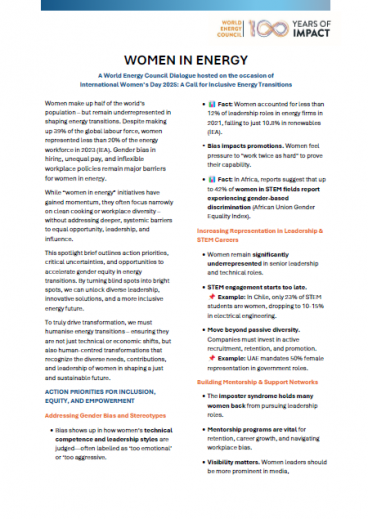Is the energy sector ready to lead by example?
The World Energy Council Secretary General and CEO, Dr Angela Wilkinson, joined a panel of industry leaders during the 2020 Sustainable Innovation Forum to discuss the energy sector’s readiness to lead by example. Below are her remarks.
- - -
In the ‘race to zero’ it important we don’t lose sight of the bigger story of energy. Energy is not just about carbon, it’s a much bigger story of human development and progress. And a bigger picture perspective is the essential starting point for our ambitions to building back better.
Energy has never been a single or uniform sector. It is a diverse landscape in a wider ecosystem with blurring boundaries. Even before the Covid crisis, the ‘who’ leads the energy industry was changing fast – investors and innovators were starting to flex their financial and technology muscles.
Global Energy Transition is part of the Grand Transition – a fundamentally different story of human development and progress – the so-called 4th industrial revolution. I like to think of energy as a story of humanity that is still reaching for the stars, rather than a return to the farm, even if it is a renewable energy farm!
So, we are in an era of energy for people and planet where energy industry developments are being shaped by the interplay of four global drivers of change – the 4Ds of decarbonisation, decentralisation, digitalisation and disruption - and especially disruption in demand. The fifth and less visible D is of course diversity – there is no one size fit all. That’s what the World Energy Trilemma Index and World Energy Transition Radar show us.
The Council is very diverse and always has been – engaging regional, technological and the social diversity that is now key to securing more energy and climate neutrality in a new post-crisis era of affordability and social justice.
Hopes that recovery will enable us to build back better, in effect, mean accelerating the pace of a diverse global energy transition. This cannot be done by relying on the push of new technologies alone. We need to enable the pull of connected energy societies and to achieve that we need to humanize energy.
I’d like to offer three quick reflections on ‘how to’ in humanising energy:
- Now is the time to put the S back into the energy industry ESG agenda
- As we lead up to COP 26, we must be open to a more honest conversation about ‘how to’ help societies manage the fuller costs of accelerating pace and make better use of all available options to avoid the growing risk of fragmentation and extreme polarization
- Over the next 10 years, we must engage diversity in energy by accelerating women’s power transition and engaging the role of women, youth and vulnerable communities in decision making






_-80_result_688_387_s_c1_c_c.jpg)

